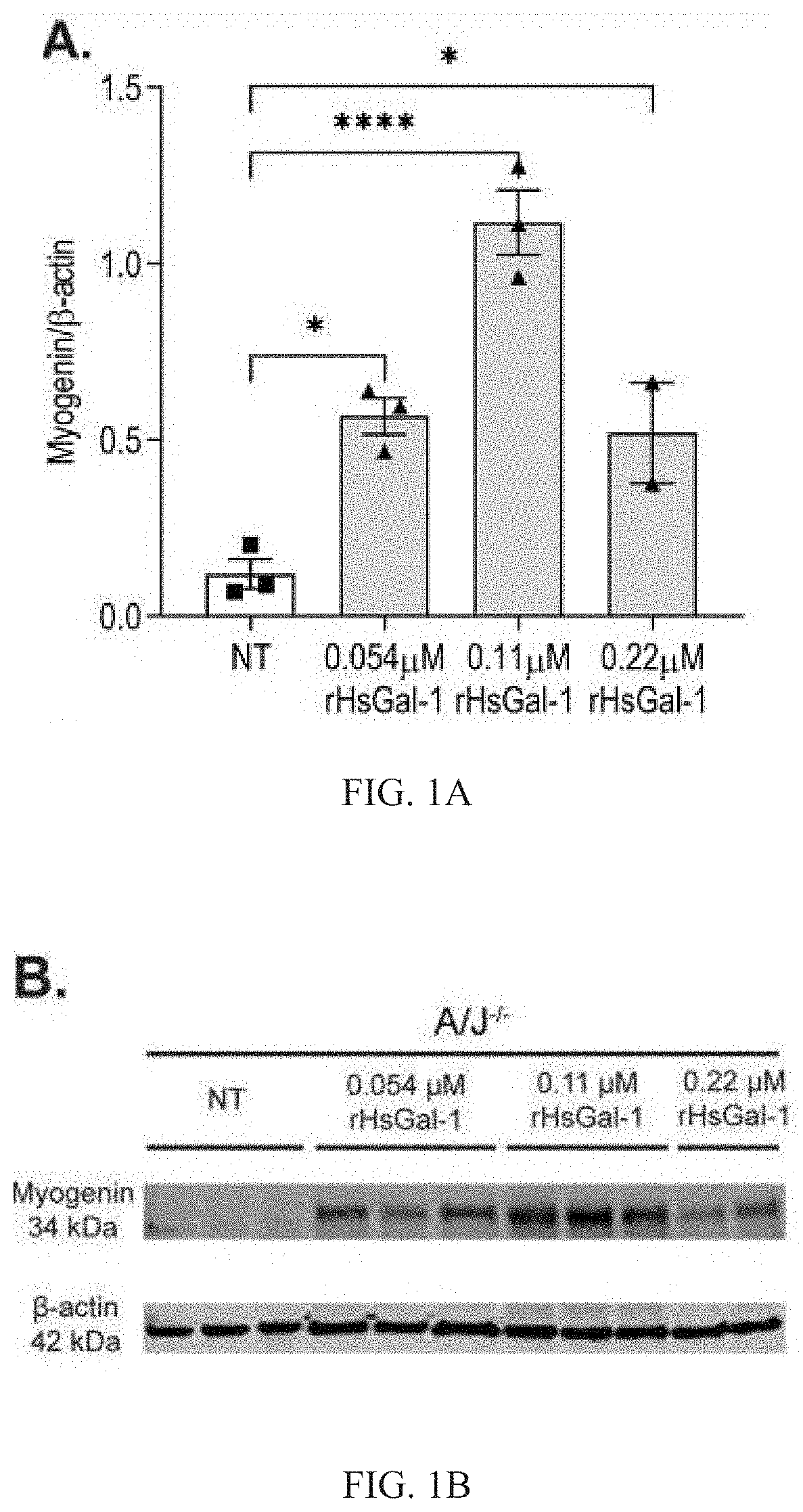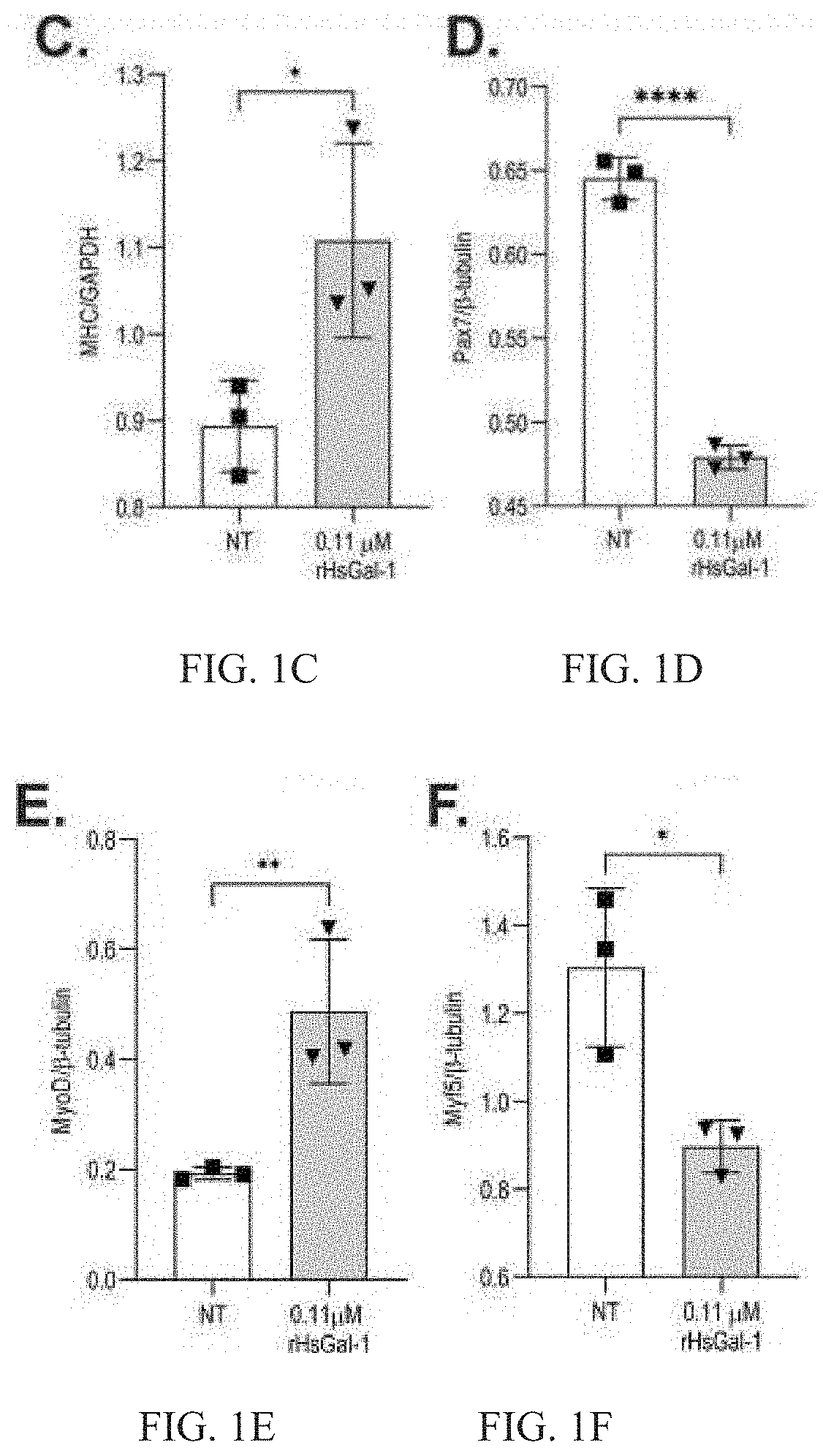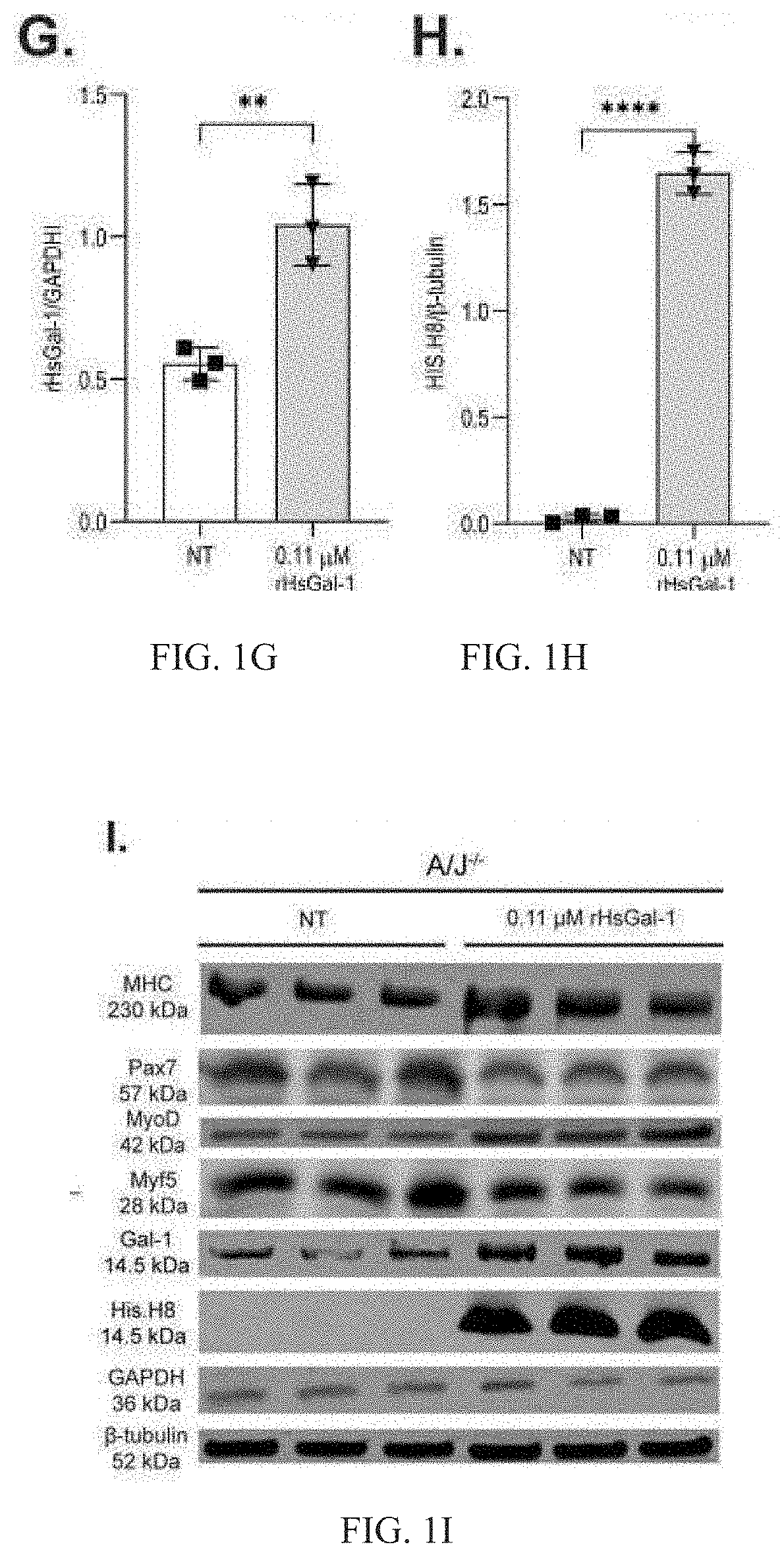Galectin-1 immunomodulation and myogenic improvements in muscle diseases and autoimmune disorders
a technology of myogenic improvement and galectin-1, which is applied in the field of galectin1 immunomodulation and myogenic improvement in muscle diseases and autoimmune disorders, can solve the problems of adversely affecting the outcome of other types of muscular dystrophies, deflazacort fails in treating patients with lgmd2b, and notoriously difficult to treat muscular dystrophies
- Summary
- Abstract
- Description
- Claims
- Application Information
AI Technical Summary
Benefits of technology
Problems solved by technology
Method used
Image
Examples
example 1
[0054]Recombinant Human Galectin-1 (rHsGal-1) Production and Purification
[0055]The human Galectin-1 gblock LGALS1 gene fragments were produced as doubled-stranded DNA using high fidelity polymerase. The LGALS1 gblock was cloned into the pET29b (+) vector using NEBuilder® HiFi DNA Assembly Cloning Kit. The product was purified following the E.Z.N.A.® Plasmid DNA Mini Kit I protocol and the DNA sequence was confirmed by Eton-Bioscience, Inc. The cloned vector was transformed into BL21(DE3) competent E. coli cells (High Efficiency, NEB # C2527H) grown and induced with 0.1 mM IPTG. rHsGal-1 was purified using the Cobalt Talon Metal Affinity Resin protocol in a poly-prep® Chromatography column and imidazole elution buffer. Purified rHsGal-1 was then filtered and dialyzed three times for a total of 24 hours in PBS at 4° C. Endotoxin levels were measured using LAL Chromogenic Endotoxin Quantitation Kit. All endotoxin levels of purified rHsGal-1 were below the FDA limit of 0.5 EU / ml at >0.1...
example 2
[0082]Monomeric and dimeric forms of galectin-1 (mGal-1 and dGal-1) were successfully expressed from constructs received, purified and tested in membrane repair in A / J− / − myotubes and BlaJ myofibers.
[0083]Both the oxidized and reduced versions of mGal-1 had very little effect on membrane resealing when cells were treated 10 min before wounding but did have intermediate beneficial effects on membrane resealing when administered to cells 48 hrs prior to wounding. This suggests that these variants may need to be internalized to have a benefit on membrane resealing.
[0084]rHsGal-1 was substantially more effective at improving membrane resealing than either monomeric form at both 10 minutes and 48 hours, suggesting that the fixed monomeric form is unable to achieve mechanistic stabilization. Our data shows that rHsGal-1 behaves similar to endogenous Gal-1 which changes between monomeric and dimeric forms based on concentration and cellular need.
[0085]Alkylated rHsGal-1 increases membrane ...
example 3
[0087]In Vivo rHsGal-1 Treatment: Dose Response.
TABLE 1Length of Treatment TreatmentDoseRegimenResult24 hours 27 mg / kgonceFIG. 5A 1 week 27 mg / kg3x / weekFIG. 5B 1 week0.27 mg / kg2x / weekFIG. 5C 1 week 2.7 mg / kg2x / weekFIG. 6 1 month 2.7 mg / kg1x / weekFIG. 7 1 month0.27 mg / kg1x / weekFIG. 8
[0088]Initial dose finding experiments in mice demonstrate that 2.7 mg / kg dose (2× / wk) of rHsGal-1 induces a 2-fold improvement in membrane repair. The timing of the dose is important as dosing shortly before the animals were used for the experiment dramatically improved the benefits to membrane repair. Administration rHsGal-1 tends to promote further endogenous expression of the protein suggesting that repeated administration may lead to sustained elevated levels.
[0089]Dosing at 27 mg / kg 2× / wk only had minor benefits to membrane repair, suggesting this dose was inadequate to provide the full benefit. A very high dose treatment (27 mg / kg 3× / wk) made membrane repair worse in the animals.
[0090]Injection of...
PUM
| Property | Measurement | Unit |
|---|---|---|
| Dimensionless property | aaaaa | aaaaa |
| Dimensionless property | aaaaa | aaaaa |
| Dimensionless property | aaaaa | aaaaa |
Abstract
Description
Claims
Application Information
 Login to View More
Login to View More - R&D Engineer
- R&D Manager
- IP Professional
- Industry Leading Data Capabilities
- Powerful AI technology
- Patent DNA Extraction
Browse by: Latest US Patents, China's latest patents, Technical Efficacy Thesaurus, Application Domain, Technology Topic, Popular Technical Reports.
© 2024 PatSnap. All rights reserved.Legal|Privacy policy|Modern Slavery Act Transparency Statement|Sitemap|About US| Contact US: help@patsnap.com










